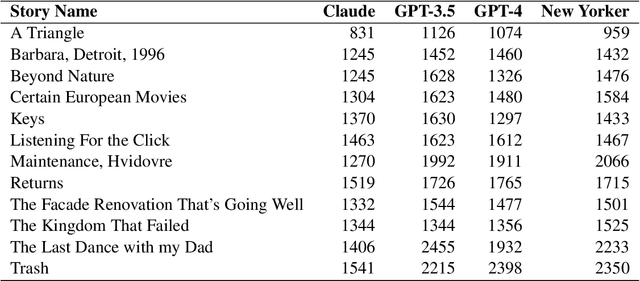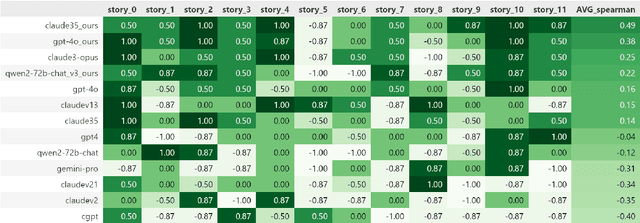Ruizhe Li
Behind the Scenes: Mechanistic Interpretability of LoRA-adapted Whisper for Speech Emotion Recognition
Sep 11, 2025Abstract:Large pre-trained speech models such as Whisper offer strong generalization but pose significant challenges for resource-efficient adaptation. Low-Rank Adaptation (LoRA) has become a popular parameter-efficient fine-tuning method, yet its underlying mechanisms in speech tasks remain poorly understood. In this work, we conduct the first systematic mechanistic interpretability study of LoRA within the Whisper encoder for speech emotion recognition (SER). Using a suite of analytical tools, including layer contribution probing, logit-lens inspection, and representational similarity via singular value decomposition (SVD) and centered kernel alignment (CKA), we reveal two key mechanisms: a delayed specialization process that preserves general features in early layers before consolidating task-specific information, and a forward alignment, backward differentiation dynamic between LoRA's matrices. Our findings clarify how LoRA reshapes encoder hierarchies, providing both empirical insights and a deeper mechanistic understanding for designing efficient and interpretable adaptation strategies in large speech models. Our code is available at https://github.com/harryporry77/Behind-the-Scenes.
Helix 1.0: An Open-Source Framework for Reproducible and Interpretable Machine Learning on Tabular Scientific Data
Jul 23, 2025Abstract:Helix is an open-source, extensible, Python-based software framework to facilitate reproducible and interpretable machine learning workflows for tabular data. It addresses the growing need for transparent experimental data analytics provenance, ensuring that the entire analytical process -- including decisions around data transformation and methodological choices -- is documented, accessible, reproducible, and comprehensible to relevant stakeholders. The platform comprises modules for standardised data preprocessing, visualisation, machine learning model training, evaluation, interpretation, results inspection, and model prediction for unseen data. To further empower researchers without formal training in data science to derive meaningful and actionable insights, Helix features a user-friendly interface that enables the design of computational experiments, inspection of outcomes, including a novel interpretation approach to machine learning decisions using linguistic terms all within an integrated environment. Released under the MIT licence, Helix is accessible via GitHub and PyPI, supporting community-driven development and promoting adherence to the FAIR principles.
Marco-Bench-MIF: On Multilingual Instruction-Following Capability of Large Language Models
Jul 16, 2025Abstract:Instruction-following capability has become a major ability to be evaluated for Large Language Models (LLMs). However, existing datasets, such as IFEval, are either predominantly monolingual and centered on English or simply machine translated to other languages, limiting their applicability in multilingual contexts. In this paper, we present an carefully-curated extension of IFEval to a localized multilingual version named Marco-Bench-MIF, covering 30 languages with varying levels of localization. Our benchmark addresses linguistic constraints (e.g., modifying capitalization requirements for Chinese) and cultural references (e.g., substituting region-specific company names in prompts) via a hybrid pipeline combining translation with verification. Through comprehensive evaluation of 20+ LLMs on our Marco-Bench-MIF, we found that: (1) 25-35% accuracy gap between high/low-resource languages, (2) model scales largely impact performance by 45-60% yet persists script-specific challenges, and (3) machine-translated data underestimates accuracy by7-22% versus localized data. Our analysis identifies challenges in multilingual instruction following, including keyword consistency preservation and compositional constraint adherence across languages. Our Marco-Bench-MIF is available at https://github.com/AIDC-AI/Marco-Bench-MIF.
Business as Rulesual: A Benchmark and Framework for Business Rule Flow Modeling with LLMs
May 29, 2025Abstract:Process mining aims to discover, monitor and optimize the actual behaviors of real processes. While prior work has mainly focused on extracting procedural action flows from instructional texts, rule flows embedded in business documents remain underexplored. To this end, we introduce a novel annotated Chinese dataset, BPRF, which contains 50 business process documents with 326 explicitly labeled business rules across multiple domains. Each rule is represented as a <Condition, Action> pair, and we annotate logical dependencies between rules (sequential, conditional, or parallel). We also propose ExIde, a framework for automatic business rule extraction and dependency relationship identification using large language models (LLMs). We evaluate ExIde using 12 state-of-the-art (SOTA) LLMs on the BPRF dataset, benchmarking performance on both rule extraction and dependency classification tasks of current LLMs. Our results demonstrate the effectiveness of ExIde in extracting structured business rules and analyzing their interdependencies for current SOTA LLMs, paving the way for more automated and interpretable business process automation.
Business as \textit{Rule}sual: A Benchmark and Framework for Business Rule Flow Modeling with LLMs
May 24, 2025Abstract:Process mining aims to discover, monitor and optimize the actual behaviors of real processes. While prior work has mainly focused on extracting procedural action flows from instructional texts, rule flows embedded in business documents remain underexplored. To this end, we introduce a novel annotated Chinese dataset, \textbf{BPRF}, which contains 50 business process documents with 326 explicitly labeled business rules across multiple domains. Each rule is represented as a <Condition, Action> pair, and we annotate logical dependencies between rules (sequential, conditional, or parallel). We also propose \textbf{ExIde}, a framework for automatic business rule extraction and dependency relationship identification using large language models (LLMs). We evaluate ExIde using 12 state-of-the-art (SOTA) LLMs on the BPRF dataset, benchmarking performance on both rule extraction and dependency classification tasks of current LLMs. Our results demonstrate the effectiveness of ExIde in extracting structured business rules and analyzing their interdependencies for current SOTA LLMs, paving the way for more automated and interpretable business process automation.
Attributing Response to Context: A Jensen-Shannon Divergence Driven Mechanistic Study of Context Attribution in Retrieval-Augmented Generation
May 22, 2025Abstract:Retrieval-Augmented Generation (RAG) leverages large language models (LLMs) combined with external contexts to enhance the accuracy and reliability of generated responses. However, reliably attributing generated content to specific context segments, context attribution, remains challenging due to the computationally intensive nature of current methods, which often require extensive fine-tuning or human annotation. In this work, we introduce a novel Jensen-Shannon Divergence driven method to Attribute Response to Context (ARC-JSD), enabling efficient and accurate identification of essential context sentences without additional fine-tuning or surrogate modelling. Evaluations on a wide range of RAG benchmarks, such as TyDi QA, Hotpot QA, and Musique, using instruction-tuned LLMs in different scales demonstrate superior accuracy and significant computational efficiency improvements compared to the previous surrogate-based method. Furthermore, our mechanistic analysis reveals specific attention heads and multilayer perceptron (MLP) layers responsible for context attribution, providing valuable insights into the internal workings of RAG models.
Automated Creativity Evaluation for Large Language Models: A Reference-Based Approach
Apr 22, 2025



Abstract:Creative writing is a key capability of Large Language Models (LLMs), with potential applications in literature, storytelling, and various creative domains. However, evaluating the creativity of machine-generated texts remains a significant challenge, as existing methods either rely on costly manual annotations or fail to align closely with human assessments. In this paper, we propose an effective automated evaluation method based on the Torrance Test of Creative Writing (TTCW), which evaluates creativity as product. Our method employs a reference-based Likert-style approach, scoring generated creative texts relative to high-quality reference texts across various tests. Experimental results demonstrate that our method significantly improves the alignment between LLM evaluations and human assessments, achieving a pairwise accuracy of 0.75 (+15\%).
Towards deployment-centric multimodal AI beyond vision and language
Apr 04, 2025Abstract:Multimodal artificial intelligence (AI) integrates diverse types of data via machine learning to improve understanding, prediction, and decision-making across disciplines such as healthcare, science, and engineering. However, most multimodal AI advances focus on models for vision and language data, while their deployability remains a key challenge. We advocate a deployment-centric workflow that incorporates deployment constraints early to reduce the likelihood of undeployable solutions, complementing data-centric and model-centric approaches. We also emphasise deeper integration across multiple levels of multimodality and multidisciplinary collaboration to significantly broaden the research scope beyond vision and language. To facilitate this approach, we identify common multimodal-AI-specific challenges shared across disciplines and examine three real-world use cases: pandemic response, self-driving car design, and climate change adaptation, drawing expertise from healthcare, social science, engineering, science, sustainability, and finance. By fostering multidisciplinary dialogue and open research practices, our community can accelerate deployment-centric development for broad societal impact.
"I know myself better, but not really greatly": Using LLMs to Detect and Explain LLM-Generated Texts
Feb 18, 2025Abstract:Large language models (LLMs) have demonstrated impressive capabilities in generating human-like texts, but the potential misuse of such LLM-generated texts raises the need to distinguish between human-generated and LLM-generated content. This paper explores the detection and explanation capabilities of LLM-based detectors of LLM-generated texts, in the context of a binary classification task (human-generated texts vs LLM-generated texts) and a ternary classification task (human-generated texts, LLM-generated texts, and undecided). By evaluating on six close/open-source LLMs with different sizes, our findings reveal that while self-detection consistently outperforms cross-detection, i.e., LLMs can detect texts generated by themselves more accurately than those generated by other LLMs, the performance of self-detection is still far from ideal, indicating that further improvements are needed. We also show that extending the binary to the ternary classification task with a new class "Undecided" can enhance both detection accuracy and explanation quality, with improvements being statistically significant and consistent across all LLMs. We finally conducted comprehensive qualitative and quantitative analyses on the explanation errors, which are categorized into three types: reliance on inaccurate features (the most frequent error), hallucinations, and incorrect reasoning. These findings with our human-annotated dataset emphasize the need for further research into improving both self-detection and self-explanation, particularly to address overfitting issues that may hinder generalization.
A Unified Framework for Semi-Supervised Image Segmentation and Registration
Feb 05, 2025Abstract:Semi-supervised learning, which leverages both annotated and unannotated data, is an efficient approach for medical image segmentation, where obtaining annotations for the whole dataset is time-consuming and costly. Traditional semi-supervised methods primarily focus on extracting features and learning data distributions from unannotated data to enhance model training. In this paper, we introduce a novel approach incorporating an image registration model to generate pseudo-labels for the unannotated data, producing more geometrically correct pseudo-labels to improve the model training. Our method was evaluated on a 2D brain data set, showing excellent performance even using only 1\% of the annotated data. The results show that our approach outperforms conventional semi-supervised segmentation methods (e.g. teacher-student model), particularly in a low percentage of annotation scenario. GitHub: https://github.com/ruizhe-l/UniSegReg.
 Add to Chrome
Add to Chrome Add to Firefox
Add to Firefox Add to Edge
Add to Edge